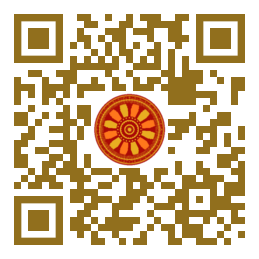
:: International Transaction Journal of Engineering, Management, & Applied Sciences & Technologies
http://TuEngr.com

ISSN 2228-9860
eISSN 1906-9642
CODEN: ITJEA8
FEATURE PEER-REVIEWED ARTICLE
Vol.13(7)(2022) |
Tangible and Intangible Components of Al-Najafi Heritage Street as a Factor of Liveable City
 Oday Abdulqader
(Department of Architecture, College of Engineering, University of Mosul, IRAQ),
Oday Abdulqader
(Department of Architecture, College of Engineering, University of Mosul, IRAQ),
Zinah Aljumaah, Azizi Bahauddin (School of Housing, Building and Planning, Universiti Sains Malaysia, MALAYSIA).
Disciplinary: Architecture (Heritage Architecture, Theory of Design, Urban Design).
doi: 10.14456/ITJEMAST.2022.146
Keywords: Heritage architecture; Old Mosul City; Heritage street; Urban conservation.
AbstractCultural heritage has an important role in the contemporary developments of the city. Urban development is linked to heritage cities' cultural identity by sustaining the heritage value of the urban space, which influences the heritage value. The study's focus is on the tangible and intangible elements of the heritage streets in cities with a unique architectural heritage, which faced crises and war disasters. Al-Najafi Street in old Mosul city is a famous heritage street that included tangible and intangible elements and affected the disaster of the war in 2017. Developers are facing difficulties in protecting the heritage value of the city during the reconstruction process of urban development. The inattention to the intangible elements leads to creating an empty city (dead city). The study aims to determine the tangible and intangible components of the heritage streets in the old Mosul City. The methodology applies qualitative approaches using visual observation for the case study and a survey of the pedestrians in the case study. Results show that facades, details, symbols, and materials are the important factors of the tangible elements. In comparison, the intangible factors are organizational urban structure, activities, and traditional art crafts, which are the key elements of reviving the street and the city to be a liveable city, avoiding the Old Mosul City is a dead city.Paper ID: 13A7T
Cite this article:
Abdulqader, O., Aljumaah, Z., and Bahauddin, A. (2022). Tangible and Intangible Components of Al-Najafi Heritage Street as a Factor of Liveable City. International Transaction Journal of Engineering, Management, & Applied Sciences & Technologies, 13(7), 13A7T, 1-8. http://TUENGR.COM/V13/13A7T.pdf DOI: 10.14456/ITJEMAST.2022.146
References
- Abdul Rahman, N., Shamsuddin, S., & Ghani, I. (2015). What Makes People Use the Street?: Towards a liveable urban environment in Kuala Lumpur city centre. Procedia - Social and Behavioral Sciences. 170, 624-632.
- Abo Ghazala, S. (2013). Sustainability as an entry point to preserve identity in light of globalization (case study of the Arab Republic of Egypt). Proceedings of the Third National Architectural Heritage Forum, Research and Heritage, Cairo, Egypt. 277-280.
- Caan, S. (2011). Rethinking Design and Interiors Human Beings in the Built Environment. London: Laurence King Publishing.
- Kallidaikurichi, S., & Belinda, Y. (2010). Developing Living Cities: From Analysis to Action. In S. Kallidaikurichi, & Y. Belinda, Developing Living Cities: From Analysis To Action. Singapore: World scientific. 1-11.
- KarakuL, o. (2011). An Integrated Approach To Conservation Based On The Interrelations Of Tangible And Intangible Cultural Properties. METU Journal of the Faculty of Architecture. 28(2), 105-125.
- Moore, G. T. (1979). Architecture and Human Behaviour: The Place of Environment-Behaviour Studies in Architecture. Wisconsin Architect. 18-21.
- Nocca, F. (2017). The Role of Cultural Heritage in Sustainable Development: Multidimensional Indicators as Decision-Making Tool. Sustainability. 9(10), 1-28.
- Rusalic, D. (2009). Making the intangible tangible: the new interface of Cultural Heritage. Belgrade: Institute of Ethnography.
- Shamsuddin, S., Abu Hassan, N. R., & Bilyamin, S. F. (2012). Walkable Environment in Increasing the Liveability of a City. Procedia - Social and Behavioral Sciences. (50), 167-178.
- Shyllon, F. (2016). Cultural Heritage and Intellectual Property: Convergence, Divergence, and Interface. In W. Logan, M. Craith, & U. Kockel, A Companion to Heritage Studies. Chichester: Wiley Blackwell. 55-68
- Song, J. (2010). Design Research Society (DRS) International Conference Design & Complexity. Retail Design and Sensory Experience: Design Inquiry of Complex Reality. Montreal: the School of Industrial Design, Universite de Montreal. 1358-1370.
- Southworth, M. (2016). Learning to Make Liveable Cities. Journal of Urban Design, 21(5), 570-573.
- Sultan, M. S. (2013). Architectural Financing Issues: The Strategic Framework for the Promotion of Heritage Preservation and Protection. Proceedings of the Third National Urban Heritage Forum - Research and Studies, 203-221.
- Tarik, D. N., & Hussein, S. F. (2017). Sustainable Investment in Urban Heritage Buildings (Analytical Study of Arab Models). Journal of Engineering. 23(2), 39-60.
- UNESCO. (2011). Recommendation on The Historic Urban Landscape. Paris: United Nations Educational Scientific and Cultural Organization.
- UNESCO. (2018). Culture in City Reconstruction and Recovery. Paris: United Nations Educational Scientific and Cultural Organization.
Other issues:
Vol.13(6)(2022)
Vol.13(5)(2022)
Vol.13(4)(2022)
Archives
Call-for-Papers
Call-for-Scientific PapersCall-for-Research Papers: ITJEMAST invites you to submit high quality papers for full peer-review and possible publication in areas pertaining engineering, science, management and technology, especially interdisciplinary/cross-disciplinary/multidisciplinary subjects.
To publish your work in the next available issue, your manuscripts together with copyright transfer document signed by all authors can be submitted via email to Editor @ TuEngr.com (please see all detail from Instructions for Authors)
Publication and peer-reviewed process:
After the peer-review process, articles will be on-line published in the available next issue. However, the International Transaction Journal of Engineering, Management, & Applied Sciences & Technologies cannot guarantee the exact publication time as the process may take longer time, subject to peer-review approval and adjustment of the submitted articles.